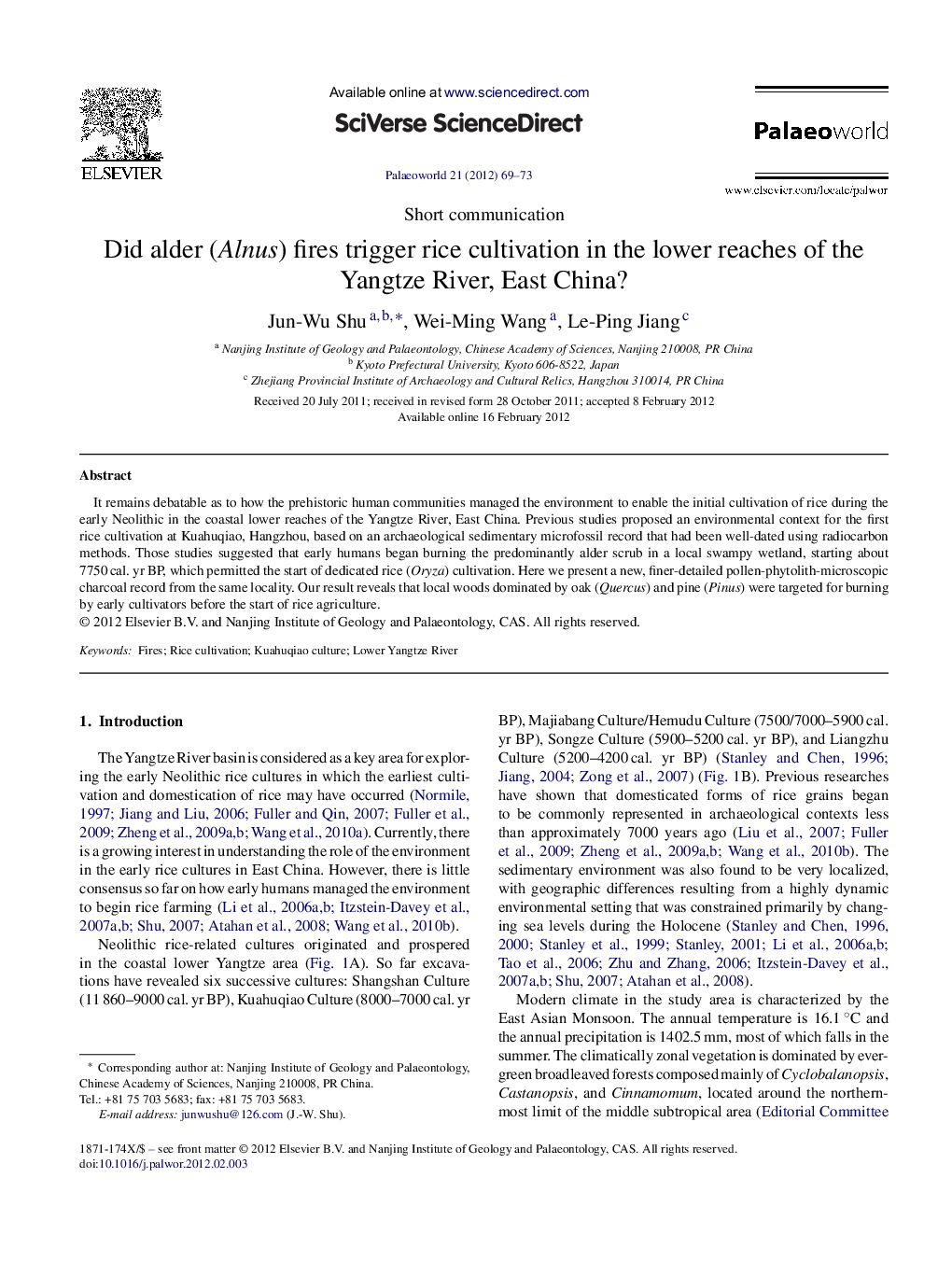| Article ID | Journal | Published Year | Pages | File Type |
|---|---|---|---|---|
| 4749737 | Palaeoworld | 2012 | 5 Pages |
It remains debatable as to how the prehistoric human communities managed the environment to enable the initial cultivation of rice during the early Neolithic in the coastal lower reaches of the Yangtze River, East China. Previous studies proposed an environmental context for the first rice cultivation at Kuahuqiao, Hangzhou, based on an archaeological sedimentary microfossil record that had been well-dated using radiocarbon methods. Those studies suggested that early humans began burning the predominantly alder scrub in a local swampy wetland, starting about 7750 cal. yr BP, which permitted the start of dedicated rice (Oryza) cultivation. Here we present a new, finer-detailed pollen-phytolith-microscopic charcoal record from the same locality. Our result reveals that local woods dominated by oak (Quercus) and pine (Pinus) were targeted for burning by early cultivators before the start of rice agriculture.
